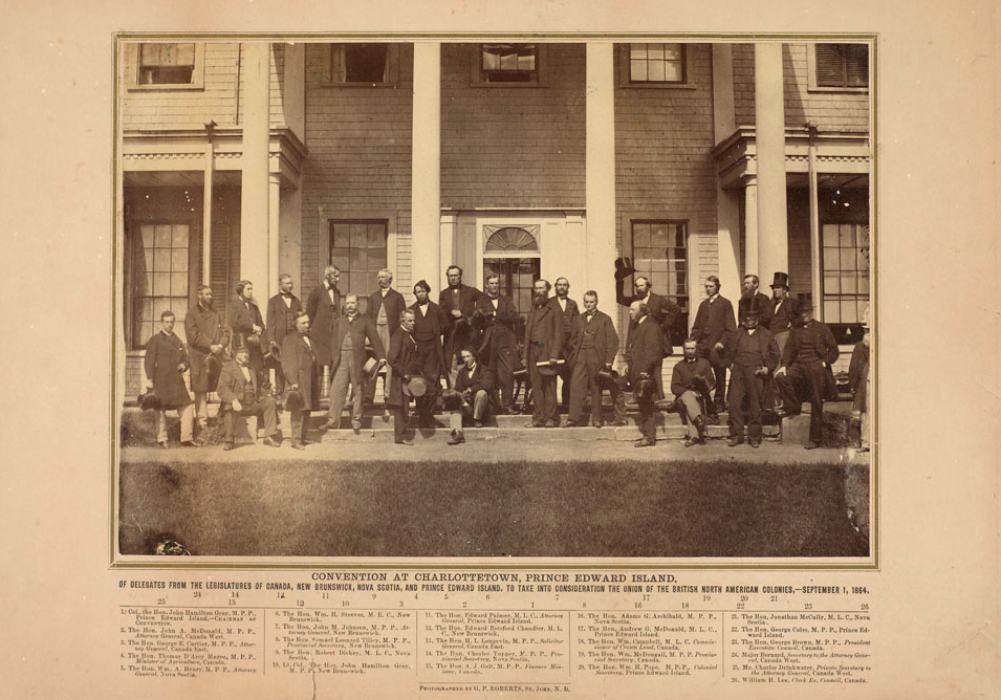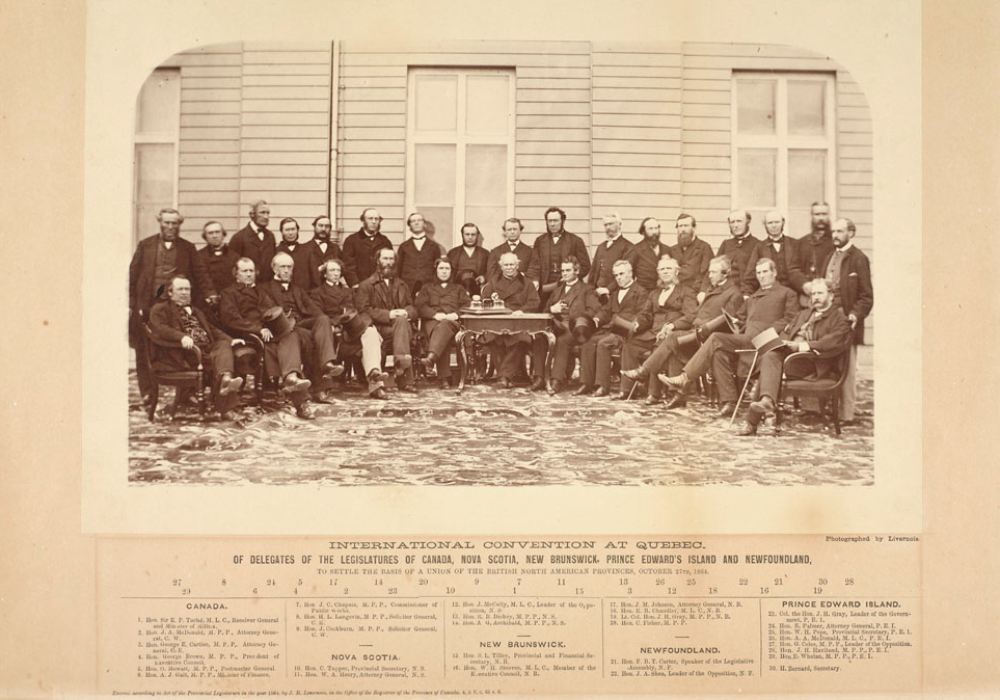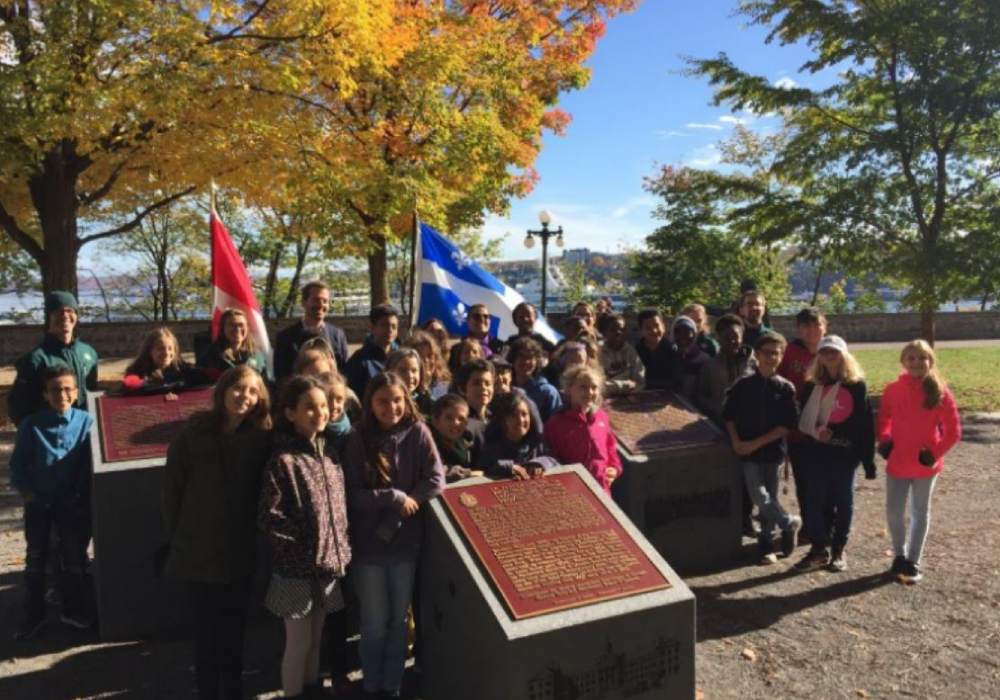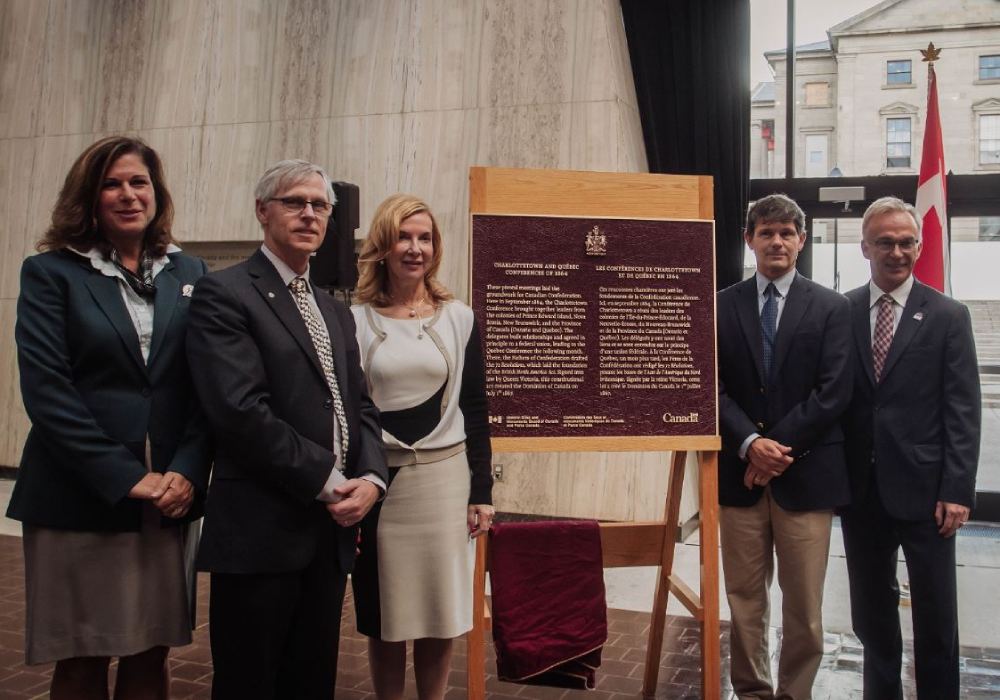Charlottetown and Québec Conferences of 1864 National Historic Event
The Charlottetown and Québec Conferences of 1864 was designated a national historic event in 2014.
Historical importance: Two conferences held during the fall of 1864 were fundamental to the creation of the Dominion of Canada

© George P. Roberts / Library and Archives Canada / C-000733

© Jules-Isae benoit dit Livernois / Library and Archives Canada / C-016588
Commemorative plaque: 165 Richmond Street, Charlottetown, Prince Edward IslandFootnote 1
Charlottetown and Québec Conferences of 1864
These pivotal meetings laid the groundwork for Canadian Confederation. Here in September 1864, the Charlottetown Conference brought together leaders from the colonies of Prince Edward Island, Nova Scotia, New Brunswick, and the Province of Canada (Ontario and Quebec). The delegates built relationships and agreed in principle to a federal union, leading to the Québec Conference the following month. There, the Fathers of Confederation drafted the 72 Resolutions, which laid the foundation of the British North America Act. Signed into law by Queen Victoria, this constitutional act created the Dominion of Canada on July 1st 1867.
Commemorative plaque: Montmorency Park, Québec, QuebecFootnote 1
Charlottetown and Québec Conferences of 1864
These meetings laid the groundwork for Canadian Confederation. In October 1864, a month after an agreement in principle was reached at Charlottetown, 33 delegates from the British North American colonies met at the Province of Canada’s Parliament, then located here. They drafted the 72 Resolutions, which established the structure of the federal union. After heated debates among supporters and critics of confederation, the resolutions were given Royal Assent as the British North America Act. On July 1st 1867 this act, uniting the Province of Canada (Quebec and Ontario), Nova Scotia, and New Brunswick, created the Dominion of Canada.
Charlottetown and Québec Conferences of 1864
The Charlottetown and Québec conferences of 1864 were pivotal meetings that brought together influential political leaders of British North America and laid the groundwork for Canadian Confederation on 1 July 1867. At the Charlottetown Conference, delegates from Prince Edward Island, the Province of Canada (Ontario and Quebec), Nova Scotia, and New Brunswick built relationships and agreed in principle to a federal union of the colonies. They settled upon terms at the Québec Conference, which resulted in the 72 Resolutions that provided the foundation for the British North America Act of 1867. A third and final meeting took place in London, England, two years later.

© Parks Canada

© Parks Canada
In the spring of 1864, the legislatures of New Brunswick, Nova Scotia, and Prince Edward Island expressed interest in meeting to discuss the possibility of a Maritime union. When the Province of Canada heard of the proposed conference, members of its combined legislature requested attendance at the colonial meeting to explore a broader political union. The Charlottetown Conference was held in September 1864 in the Legislative Council Chamber of the Colonial Building. Today this building is known as Province House. At the Charlottetown meetings, the 23 delegates debated issues concerning financial arrangements, the respective powers of the central and regional governments, and an elected versus appointed upper house. Although the conference in Charlottetown produced neither a formal record of proceedings nor official resolutions, delegates agreed on certain fundamental principles. All delegates agreed to meet again to continue discussions.
On 10 October 1864, the Québec Conference opened with a total of 33 delegates from the British North American colonies, including Newfoundland which had not previously participated. They met at the legislature building on Côte de la Montagne in Québec City. This building was destroyed by fire in 1883. By the end of 16 days of vigorous debate, the delegates had developed the 72 Resolutions, or the Québec Resolutions, which provided a legislative framework for the new country. Some issues, such as the regional distribution of seats in the upper house (the Senate) and specifics relating to finances, created schisms between the delegates and ultimately led the legislatures of Prince Edward Island and Newfoundland to withdraw from the process.
At the London Conference, the Fathers of Confederation refined the 72 Resolutions, shaping them into a statute for consideration by the British Parliament. In attendance for this conference in December 1866 were representatives from the Province of Canada, New Brunswick, and Nova Scotia. The final bill was ready for the House of Lords by February and moved relatively easily through the British parliamentary system. In late March, Queen Victoria signed the British North America Act, setting the stage for Confederation on 1 July 1867.
Backgrounder last update: 2017-10-06
The National Program of Historical Commemoration relies on the participation of Canadians in the identification of places, events and persons of national historic significance. Any member of the public can nominate a topic for consideration by the Historic Sites and Monuments Board of Canada.
- Date modified :